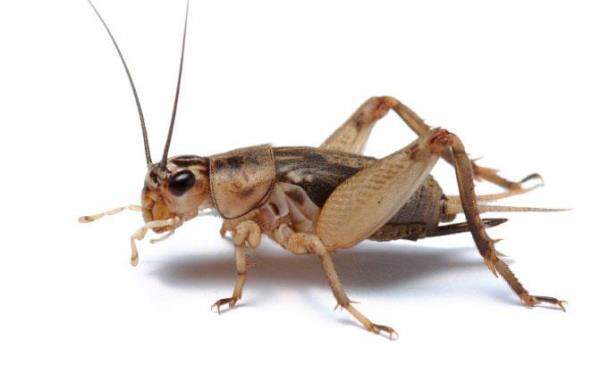newtownrrt.org – Crickets, with their distinctive chirping sounds, are a familiar part of the nighttime soundscape. These insects, belonging to the order Orthoptera, are more than just nighttime musicians; they play important ecological roles and have fascinating life histories. This article explores the world of crickets, from their anatomy and behavior to their ecological significance and cultural impact.
Physical Characteristics: Adapted for Sound Production and Jumping
Crickets share some similarities with grasshoppers but have distinct features:
- Long Antennae: Unlike grasshoppers, crickets have long, slender antennae, often longer than their body.
- Modified Forewings (Tegmina): Male crickets produce their characteristic chirps by rubbing their forewings together. These wings are modified with a specialized structure called a “file” and “scraper.”
- Powerful Hind Legs: Similar to grasshoppers, crickets have powerful hind legs adapted for jumping.
- Cerci: Crickets have two sensory appendages called cerci at the end of their abdomen.
Life Cycle: Incomplete Metamorphosis
Crickets undergo incomplete metamorphosis, with three life stages:
- Egg: Eggs are typically laid in the soil or within plant stems.
- Nymph: The eggs hatch into nymphs, which resemble smaller versions of the adults but lack fully developed wings. Nymphs molt several times as they grow.
- Adult: After several molts, the nymph reaches the adult stage, with fully developed wings and reproductive organs.
Diversity and Classification: A Variety of Chirpers
Crickets belong to several families within the order Orthoptera, including:
- Gryllidae (True Crickets): This family includes field crickets, house crickets, and tree crickets.
- Gryllotalpidae (Mole Crickets): These crickets have front legs modified for digging and live primarily underground.
Habitat and Distribution: From Fields to Forests
Crickets are found in a wide range of habitats, including fields, meadows, forests, and even urban areas. They are distributed globally, except for extremely cold regions.
Sound Production (Stridulation): The Cricket’s Song
The chirping sound of crickets is produced by a process called stridulation:
- Mechanism: Male crickets rub a specialized ridge (the “file”) on one forewing against a scraper on the other forewing. This creates vibrations that produce sound.
- Purpose: Crickets chirp to attract mates and establish territories. Different species have distinct songs.
- Temperature Dependence: The rate of chirping is influenced by temperature. The warmer the temperature, the faster the chirping rate. This relationship is sometimes used to estimate the temperature.
Feeding and Diet: Omnivorous Scavengers
Crickets are generally omnivorous, feeding on a variety of plant matter, insects, and decaying organic matter.
Behavior and Communication: Nighttime Activity and Social Interactions
Crickets are primarily nocturnal, being most active at night. They exhibit various behaviors:
- Territoriality: Male crickets defend territories and use their chirps to warn off rivals.
- Courtship: Male chirps also play a crucial role in attracting females for mating.
- Aggregation: Some cricket species may aggregate in groups, especially during certain times of the year.
Ecological Roles: Food Source and Nutrient Cycling
Crickets play several important roles in ecosystems:
- Food Source: They serve as a food source for various animals, including birds, reptiles, amphibians, mammals, and other insects.
- Decomposers: By feeding on decaying organic matter, they contribute to nutrient cycling.
Crickets and Humans: Interactions and Cultural Significance
Crickets have various interactions with humans:
- Pet Food: Crickets are commonly raised as food for pet reptiles, amphibians, and other animals.
- Food Source: In some cultures, crickets are consumed as a food source.
- Cultural Symbolism: Crickets have cultural significance in various societies, often symbolizing good luck, prosperity, or patience.
- Scientific Study: Crickets are used in scientific research, particularly in studies of insect behavior, physiology, and neurobiology.
Threats and Conservation: Habitat Loss and Pesticide Use
Crickets face several threats:
- Habitat Loss: The destruction of natural habitats due to urbanization, agriculture, and deforestation is a major threat.
- Pesticide Use: The use of insecticides can directly kill crickets and harm their food sources.
- Light Pollution: Artificial light at night can disrupt cricket behavior, including their communication and mating.
Conclusion: Appreciating the Cricket’s Serenade
Crickets are an integral part of many ecosystems, providing a familiar soundtrack to summer nights. Their unique method of sound production, their ecological roles, and their cultural significance make them a fascinating group of insects. By understanding their life history, behavior, and the threats they face, we can better appreciate these nighttime musicians and work towards their conservation.
